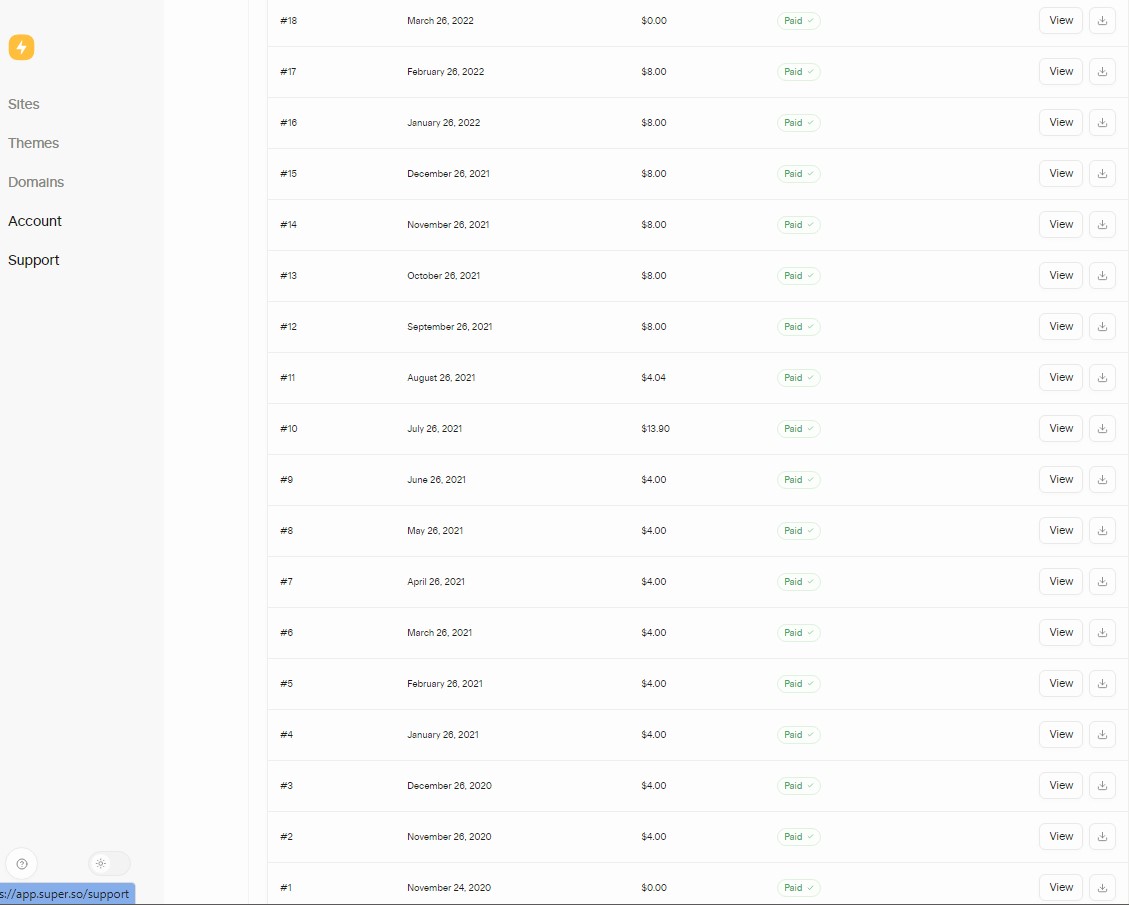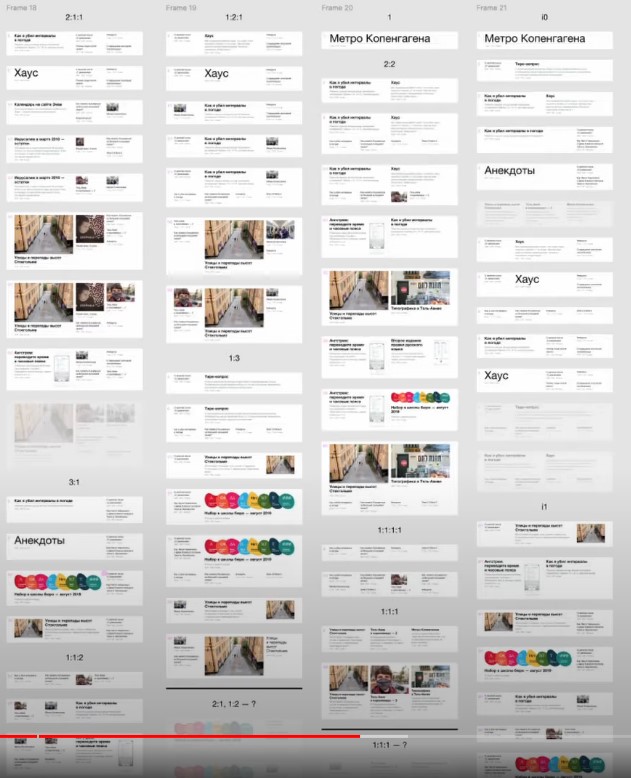Tactics and strategy for the Hashnode.com service. Retention, preservation and expansion.
 Egor Kugno
Egor Kugno
A few thoughts on service development.
My name is Egor Kugno, I am 16 years old, and I am a 10th grade student in one of the schools in Moscow.
My class is medical (maybe I will write an article about Moscow school education later - we have quite a lot of interesting things here).
Medical class is an intensive training in Biology and Chemistry (4 lessons a week in each subject), plus additional classes - workshops in Biology and Chemistry (2 lessons a week in each subject), and preparation for participation in the Biology and Chemistry Olympiads for Russian schoolchildren (2 lessons a week in each subject). In other words, every day I have biology and chemistry, well, and other subjects no one canceled.
To have everything in time - usually I wake up at 6.30, and come home from school at 19.00, have dinner and do homework, about 23.00.
What's all this heavy workload for?
To enter medical university for free education (at public expense).
It is VERY expensive to study to be a doctor in Russia, especially in Moscow.
And all guys and girls who want to become doctors realize this.
Therefore, unfortunately, school education alone, even in the best schools in Russia, is not enough.
For guaranteed passage to a medical university for free education you need to be a winner or prize-winner of the School Olympics.
And I have to prepare for it for two years.
To start preparing, of course, you need to collect materials to prepare for the Olympics.
That's why about three years ago I decided to make my own site - to collect everything I needed for preparation on one, my own site.
I asked my dad how to make a website, and my dad said he recommended looking at Wordpress.
I looked at Wordpress, but I didn't really like it; I looked at Joomla, and then I went online and found Super.so.
A couple years ago, everyone was really into Notion, and Super made a service that allows you to make a site out of my pages hosted in Notion.
Now Super costs $16 per site-but two years ago it cost $4 a month, and I started making a site on Notion+Super.
Even when the price went up to $8 and then $12 a month- those who were the first paying customers ( and me)-they kept the old price.
Within a year I was dumping files for preparation for the Olympiads into my base of Notion, and, in parallel, taking my time, making a website.
Unfortunately, one day all payments from Russia became impossible, and I could no longer pay for Super.

I had to say goodbye to my site. I returned to Wordpress.
The problem was that I did not need a template site with pictures - but all designers as a selection offered a lot of such templates.
I looked at my dad's site "Moscow Housing Law" (on Wordpress, paid theme Uku from Elmastudio.de), which daddy a little redesigned, and found on the Internet several programmers who make free minimalist templates for Wordpress.
The main now in the world on such templates - Anders Noren, and I also liked the templates of Rich Tabor, on the theme of which Wabi I made my site, a little redesigning it.

The concept of my site had changed by this time - I decided, for a start, to try to understand medical education in the world in general, that is available to kids from Russia.
Speaking of accessibility, I mean, first of all, the cost of education and accommodation, and, of course, admission to training.
Many countries, such as, for example, Switzerland, are not available for medical education at all if you are not their citizen, many prestigious medical colleges, for example, in the USA, also do not accept foreigners, and even Warren Buffett would cry at the cost of education in countries like England or Singapore.
I began to correspond with foreign universities, collect their answers to my questions, and little by little publish on my site.
I also wrote a couple dozen good (as I believe) articles, where I shared my views on the system of medical education in Russia, tested several sites where you can remotely prepare for state exams at the end of school, and so on….
Right now I have about 350 responses from Universities around the world queued up to be published on my website - a year's worth of work, to be honest.
And since I spend a tremendous amount of time on the site (in fact, all my free time) I've decided, in order to improve the site's visibility in search engines, to translate all of its content into English.
To speed up the process, I use Deepl.com, and, to be honest, I don't even proofread the finished materials - there are too many of them, and I'm alone.
When I had more than a hundred pages on the site, I thought it would be a good idea to have some insurance in case something happens to my hosting company, so I decided to publish my English content on an external site.
First of all I thought about Medium.com, but it doesn't work in Russia, and then, after a long search, I found Hashnode.com.
At first I decided to connect a subdomain of my site to the service, like english.kugno.ru, but after thinking about it, I bought the domain Kugno.com and connected it.
I have been exploring Hashnode for a week, and now I decided to write a short article about what I saw and what I missed.
The site administration may record all of the above as feature requests, and from the community I'd be happy to get answers to my few questions.
In good European-American tradition, I apologize at once to anyone who may be offended by my article.
I in no way wish to offend anyone.
The numbering in the article is conventional, that is, number 1 is no more important than number 2.
There will be headings in the article.
At first I decided to title the three sections of my article with the words Survival, Retention, Conquest, but then I softened a bit.
I have now titled them Retention, Preservation, Expansion. I will start with the first one.
Retention.
1. I think it would be great if every new member of the community gave a detailed account of themselves.
After all, aren't we all here to meet awesome people like Ekemini?
I think it would be great if every newly created blog had a pre-created About Me page and a link to that, yet empty page would be in the menu, and it would probably be a good idea for the Haspode administration to remind you the importance of this page in their welcome letter to new registered bloggers.
Here is an example of such a page
2. The most unimportant part for programmers is the design of the blog.
I've read several enthusiastic articles about how to decorate your blog using CSS properties.
For example, there is a good article about it here
However, half of the links in this article don't work anymore - or rather, the links do work, but the authors of blogs have switched to the standard, boring design of blogs. It's always easier to go with the flow, and Haspode in general positions itself as a blog service for programmers, not designers.
Nevertheless, I think it would be useful to collect all the articles about blog design in one place on Hashnode, so they're easier to find.
I recommend adding the following to the list:
1)avneesh, 2)narmadanannaka, 3)rutik, 4)sebastiangale, 5)slashism,
6)pankajsanam, 7)edidiongasikpo, 8)hashnode, 9)codecareer
and maybe have a theme design contest.
Let's make a new Zengarden.com!
3. It would be interesting to read instructions about navigation design, like in this blog.
4. The header of any Hashnode blog on a smartphone takes up half the screen. It would be great to make it smaller, by half or even three times.
5. As I wrote above - designers who create sites, as if conspired, and all produce themes for the sites of only photographers.
Find a normal theme for the site on the same Vordpress, which would look good without photos - just impossible.
On my site I am forced to use only templates pages from the theme I use for the site - that is, I am remained without search on the site, without taxonomy, without a lot of useful things only because, that the Articles template, by the idea of the programmer who created this theme, requires a huge picture on half of the screen.
The same problem exists in Hashnode.
And it is very surprising - because this site is created by programmers for, mainly, other programmers.
And the creators seem to realize that selecting illustrations for each post is a crazy, crazy, crazy waste of time.
Even if you use modern generation networks, it's still very time-consuming.
And most importantly, it's pointless. Nobody cares about the pictures.
But Hashnode has only three blog design themes, and all of them are designed for an insane amount of images.
And sites without pictures look, well, just extremely unprofessional, which no doubt scares off a lot of potential contributors.
In general, we urgently need a good theme that doesn't involve pictures on article covers.
And I boldly advise you to take my site as an example🙂 .
Or, if you can- please write me what code to add to the theme that would disable all covers in the articles of the site.
6. There are quite a lot of broken links on the service.
They are in the search, for example here, or here, here, here and here.
They are also in articles, for example here, or here.
These invalid links slightly reduce the credibility of the Hashnode site as a whole. It is necessary to clean, remove such links automatically.
Or perhaps we should even introduce a Cleanup Day: the one who finds ten broken links is guaranteed a fixed place for a week in any search on the site.
Well, this is just an example.
7. When I posted my photo (avatar), it turned out to be impossible to position.
This is surprising, as this kind of photo positioning is built into just about every service I use.
I will of course redo the photo when I get my hands on it, but it would still be worth adding a function to move the photo slightly on the avatar.
8. All the services I use have an option to add forms - for contacting the author, or for surveys.
Russia has a free embeddable forms service, Hashnode has a paid embeddable forms service from an independent developer.
I don't know how much in demand this is, but I think it's great if such a feature is available.
A couple articles about form embedding (from Yandex or Google) wouldn't hurt your new users either.
And ideally it would be great to integrate a simple HelpDeck into your blogs.
From what I've seen, I like this one from Sibirix studio the most.
9. The table of contents in articles is a really, really cool feature.
Thanks for it:)
However, it would be worth showing it to a good designer - now the table of contents does not look very (in my opinion) beautiful.
It takes up half of the screen, and is partially hidden.
This can be avoided by reducing the distance between items a bit, and it would be great if the items were highlighted in font, and subparagraphs move a little to the right, increasing the indentation from the table of contents frame by another five millimeters.
10. Sometimes blogs have a small error like this one, for example here
There is no table of contents, but space for it is reserved.
This is certainly not correct - the system should remove tables of contents if there is nothing in them.
11. A large blog subscription form appears when you finish reading the article.
I would be more comfortable if the subscription form was a little smaller (by 20 percent), and was shifted sideways without covering the end of the article, at least when reading from a desktop computer.
12. It would be great if links from articles to external resources could be closed from being indexed by search engines.
This is a bit at odds with the openness of the internet-I get it.
But some authors spend an extremely large amount of personal time blogging, and closing the links would give their blogs a little bit of a boost in the search engine rankings.
13. Each author has a Personal page.
Here, for example, is mine, with three blocks - About me, My technical stack, Free for hire.
I have only the first block filled in, and the unfilled others, in my opinion, are not needed on the page.
It would be great if the system, realizing that only one block is filled, would hide the unfilled blocks from the screen, and put the filled one in horizontal mode. In this case, on the screen of a standard monitor you will see almost the whole page at once, and on a smartphone the page will not need to scroll additionally.
14. It is necessary to rewrite all reference materials on blogging and design, if they use screenshots of Lorem Ipsum text.
This is a very bad internet tradition. I'll try to write a short article about it when I have time (this month, but closer to the end)
Preservation
15. I saw that many blogs are started and then immediately closed.
I saw something similar on the 37signals.com blog site - hey.com/world/.
Obviously, we all have our own lives, but I think it's worth asking those of us who haven't posted new material for a while- what's the reason?
Maybe they were not satisfied with something?
Did it seem inconvenient?
However, I'm sure you know about it).
16. I really like references to the used literature after the articles.
Wordpress, on which my site runs, offers a lot of extensions for this.
But when it comes to beauty, the one I like the most is Lesswrong.com's style.
Easy to add. Beautiful to look at.
It's great to have on Hashnode.
17. I also really like side footnotes.
I'm talking about links that are on the side of the main text
For example, on get-the-flat.ru at the very bottom of the page on the right,
or podivilov.ru at the top of the page on the right.
Note - if you view this page on a smartphone, the side footnote will move into the text of the article, but with a little arrow to show you which paragraph it belongs to. That sounds really, really cool to me.
Worth doing in Hashnode, I think.
18. In the Share block, which is attached after the article, you should add a link to quickly forward the article to Telegram
19. The biggest and most important section of the second part is cross-referencing between materials in a blog.
Probably the best thing on the Internet right now on this topic is the Egeya blogging engine by Ilya Birman.
Note this part:
Automated recommendations and teasers with smart beautiful layouts - see below Let me tell you about what it is.
he author of this system has manually developed about 40 different variations of exactly how links to similar content on a blog might look visually, and programmed an automatic system for building and displaying such links.
That is, first of all, visualization - links to similar articles look different depending on whether there are photos in other articles or not, whether there are photos in other articles or not, what size these photos are, and so on.

Secondly, it automatically displays links depending not only on the article tags, but also on whether the author of the blog considers these articles important (this is marked by a separate sign in the text of the article), whether the author of the blog considers these articles important (this is marked with a separate sign in the text of the article in the editor).
The author himself has written several articles about it (in Russian - use a translator), and has given two lectures about his recommendation system.
The lectures are also in Russian, but, I think, much will be clear from the pictures of the presentation.
This is really the best that is now on the Internet, and I do not understand why such systems do not realize other content management systems. content management systems.
In the same Wordpress recommendation system, compared to the system Egeya - just stone age.
This is what Hashnode needs, and as soon as possible.
20. Apparently, Hashnode has moved from Wordpress to Hashnode, which has two types of content - Pages and Articles.
Technically, Pages were always intended for those materials that rarely change, such as Office contacts, or a story about the company, and Articles - what is needed now, quickly, and can easily change.
In Wordpress itself it is still very different entities - they are differently designed by designers of templates for the site (which leads to constant problems), and also Articles, as a rule, go to the Blog on Wordpress sites, along with Next/Previous article buttons and other distinctions.
Practically no sense in such a division long ago.
Whether the site material is generated on the server at the request, or given as is in unchanged form - in modern conditions is absolutely not important.
Even if at the time when this division was invented, the difference in the speed of the page or article was a second - now, with the development of Internet speed - this difference is no longer.
I suggest not to go the way of Wordpress and get rid of Pages, leave only Articles.
In addition, if I understand correctly, in the Article I can copy all the content of any other page on the Internet, and the page is immediately ready - the text does not move away and the photos are in place - but on the Page can not do so, and I have to fill it manually.
That is, within one blog there are two different systems of creating materials - but there are no other advantages.
Obviously, the question arises - how will this change affect existing authors?
This question is well answered by Jason Fried on HEY World
Just read
21. It is necessary to make it possible to make the main article in a blog and display it on the first page.
This is implemented in Wordpress, and it helps to bypass the restrictions imposed by the authors of the themes of site design.
22. I almost forgot. You need an edit button under the text of the article.
This is now done in Wordpress, and it's a great thing.
Pressed - and you just jumped to the editor of the article. Very, very convenient
Expansion
This is the place to describe (very briefly) the fundamental transformations required by Hashnode.
23. Rewrite everything in PHP.
Hashnode is, of course, for programmers.
There are a lot of cool guys here who can't get enough of the cool breakthrough technology.
Here, the author of this article is madly happy that under the hood of Hashnode hides Next. js.
But, hand on heart-which company is the richest in the extremely competitive world of content management systems?
WordPress.com.
And what does this company run on, what's the main programming language?
PHP!!!
How much is taken up by beautiful flat-file CMS and systems written in new progressive languages and technologies, like 11ty.dev or jekyllrb.com?
Not at all, on the scale of the Internet.
0.3% or something like that.
Why?
Because not everyone in the world is a programmer (thank Gods).
And when a lawyer, a welder, a nurse, who want to start a blog, see something like:To install the system on the server you need to make sure that 14271 dependencies work properly and download missing packages from darkweb. After that, go into Terminal and type the command #":%(0,.):%;#:....
they just spit on this program, go to any hoster, and start a site on vordprez with one click.
I myself personally did so)
In addition, and this is very important - any hoster in the world is ready to host a site on PHP.
But the site, for example, on nodejs to deploy either impossible, or expensive and difficult, or very expensive.
And here all modern technologies instantly and forever (well, for the next 15 years) lose to PHP.
Then, of course, I move on to free software.
24. I'll put a link to a good, just-written article to understand the problem.
Right now, Hashnode is free.
But the company is being developed with investor money.
What happens when the investors' money runs out?
How many blogs out of the 300,000 listed on the home page are actually working? How many of them contain at least 5 articles?
And how many people pay for their blog on Hashnode?
I sat on the Hashnode site for half an hour before I found one blog with the Hashnode bar disabled at the bottom (a paid feature).
One in half an hour, that is, out of about a hundred blogs viewed!
And although you can take your materials from Hashnode, it will not help an author who has his main site on Hashnode, attached to analytics, to accounts in Linkedin and FB and so on, when this site together with the service suddenly closes.
That's why many people, those who have had to pull their data out of hundreds of closed and lost services over the last 10 years, don't want to trust a proprietary service, don't want to trust a proprietary platform.
They're understandable.
And I would say they need to be understood.
And for them it is worth releasing a separate software, CMS, which can be installed on hosting.
Like Wordpress did.
Like Ghost did.
Like Publii did.
That's actually what made these companies successful (not only that-but this one as well)
Only having your own application, which you can easily deploy on any hosting, guarantees independence and, partly, safety from the shutdown of any seemingly eternal service.
Now I'm going to get back to beauty for a second.
25. When I was looking for a theme for my website, I visited quite a few resources. For Wordpress, at first glance, there is no shortage of themes for sites or blogs.
They are, let's face it, thousands.
But I'll tell you what disadvantage there is.
On whatever site of the manufacturer and seller of templates for sites you did not go to, almost always turns out so that from the theme sold on the site you will never get the site of the company that sells these themes.
If the vendor uses their theme for their site, it's usually such a modified theme that to reproduce it you need to spend several thousand dollars to turn the purchased theme into something really good.
I've found literally the ONLY exception - Elegantthemes.com, namely their huge tutorial where they teach you how to create the same menu as on their own site. Hashnode's site is full of examples of great design work.
For example, this page.
Can I create a page like this on my own blog on the Hashnode platform?
Well, of course not.
And it's very wrong. I
t would be great if there was a law requiring theme makers (for Wordpress and other CMS) to sell only such themes, on which it is possible to build sites similar to their own without code.
It would be great if Hashnode.com would also make some variant pages for their users to use.
26. Staffing Reinforcement.
Right now, there's a bit of a scandal brewing in the Wordpress world.
Mike McAlister, one of the independent and very experienced programmers who makes themes for Wordpress, has come up with a system to pre-customize the sites he creates.
Being embedded in the templates, this customization would allow, right after installing the site very simply and clearly customize the created site directly from the administrator panel - change colors, fonts, link styles and so on, literally with a single swipe.
But the author was accused that his innovation gives him an "unfair commercial advantage"! and didn't allow these incredible changes into the Wordpress theme repository.
The author had to publish the theme without his innovation.
You can read more here, here and here
I believe that such an innovator has no place in the Wordpress ecosystem.
Working on Hashnode, he could bring a lot of new and possibly revolutionary things to your code.
I think we should try to hire him:)
27. The last of the things worth doing.
I would say that for development and for competition, mere "us vs. this or that service" articles are not enough.
Hashnode needs its own Roadmap, on any language or technology.
And the links should lead to articles published on Hashnode.
And if there are not enough articles, it is possible (and necessary) to organize contests for writing missing articles.
And, separately, we need to work with great, but a bit forgotten by programmers companies.
For example, Apache.org develops dozens of projects - and they, by and large, are not known to anyone.
Right now, some future Elon Musk needs the software that Apache has!
But their website is so awful and confusing that he'll never know- up to a billion dollars was just a click away, download the code from the site, and start making money!
Something Ibm.com has been producing for decades, literally dozens, maybe even hundreds of software products!
Who even remembers them?
Is there an IBM page on Hashnode.com?
No?
Maybe there should be?
Maybe the Hashnode administration should contact these great companies, and offer their blogging services, and tell them what they have in plain and simple language?
The once-great Yahoo.com has a dozen awesome projects, including on the trendy topic of Big Data.
Doesn't anyone work on these systems?
No one uses their free code in their projects?
There's no such thing.
So why is there no mention of them on Hashnode?
For example, I couldn't find any mention at all on Hashnode of Marko.js, which runs the huge Ebay!
All these great companies, all these incredible technologies are waiting for their new Discoverer. And it will be great if they find it here on Hashnode. com!
Sincerely,
Egor Kugno.
Hand on heart, I don't think there are any of my suggestions that the Heshnod team couldn't handle in a couple or three days.
Well, maybe rewriting everything in PHP would take a couple days longer.
So, if it's not too much trouble, please let me know when it's done:)
egor@kugno.com
P.S. I think you should make friends with Zoho.com/mail/.
Turns out it's the only service in the world that lets you connect your domain to mail for free.
Maybe you could arrange that for those who start a blog on Hashnode, they give 10 gigabytes each to mail?
That could be the start of a beautiful friendship!
Subscribe to my newsletter
Read articles from Egor Kugno directly inside your inbox. Subscribe to the newsletter, and don't miss out.
Written by

Egor Kugno
Egor Kugno
I'm a 10th grader at a Moscow school. I have a website (kugno.ru) where I write articles about medical education in Moscow and universities around the world for Russian schoolchildren. Here I will post translations of my articles, as well as answers to my questions, which I ask officials of various Russian Ministries, Departments, Education Committees of cities, regions and regions of Russia. In addition, I am interested in modern genetics (so far - school level); chemistry, primarily related to medicine, and pathology.